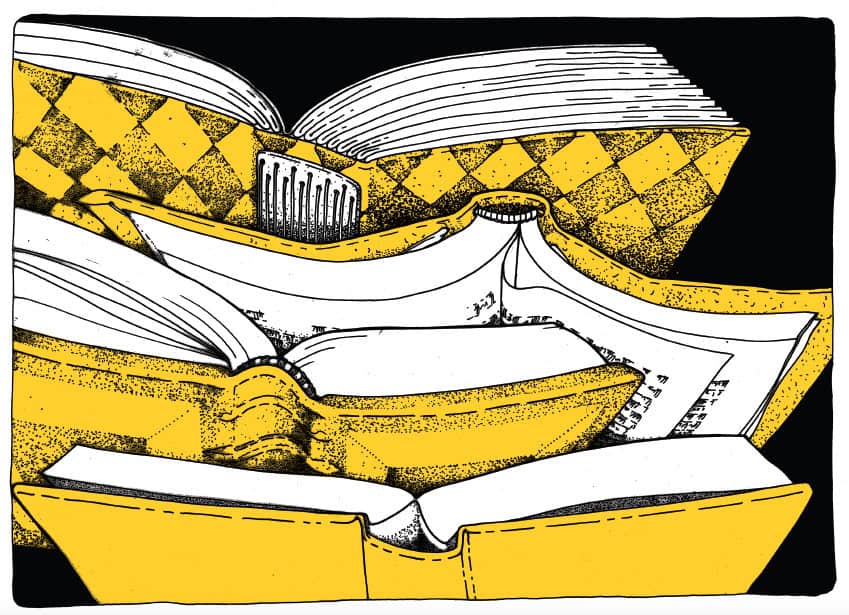The University of Iowa Libraries’ Book Model Collection (BMC) is one of the only places in the world where a visitor can hold a facsimile of a Mesopotamian clay tablet in one hand and its electronic successor, the e-reader, in the other. This collection, which comprises more than 300 items housed in an alcove in the Conservation Lab, is among the Libraries’ rarest assets—and a valuable teaching resource for preserving the cultural heritage of the book.
These bookbinding models exemplify book structures, demonstrating to students how a book operates. They range from practical to experimental and may reproduce traditional bookbinding techniques of various eras and cultures.
According to Suzanne Glémot, collections care specialist, something important happens when students interact with a model. What a collection like this exists to do, she says, is “shift the focus from books only being valuable for their text to books being valuable for their craft histories and their structural inheritances.”
The BMC began with Bill Anthony, the Libraries’ first university conservator, who came to the institution in 1984. He and his apprentice, Mark Esser, established the formalized version of the BMC in connection with an exhibit, The Art and Craft of Bookbinding, which traveled to the Art Institute of Chicago and the Metropolitan Museum of Art in New York in fall 1987. In curating the exhibit, Anthony established a professional correspondence with Gary Frost, then an early-career bookbinder.
Frost became crucial in guiding the BMC after he officially joined the conservation department in 1999, retiring in 2011. Now conservator emeritus, Frost continues to be actively involved in the BMC’s evolution; it was Frost’s idea to sort models chronologically and to include e-readers in the collection.
Decades after its founding, the BMC is a cornerstone—not just of the Libraries but also the curricula of the Center for the Book and the School of Library and Information Science.
The BMC serves a dynamic community of conservators, scholars, librarians, artists, and bookbinders at Iowa and beyond. While some universities’ book model collections are narrower in focus, the expansiveness of the BMC makes it singularly valuable to those studying bookbinding, including students from the Center for the Book.
As Frost puts it, the history of the BMC is a kind of family tree, with modern students carrying on its legacy. “We’re looking across the fluidity of time, the fluidity of invention and development.”
For now, the next step is fully digitizing the BMC so that it can be accessed by researchers worldwide through the Iowa Digital Library.

One thought on “The Libraries’ Book Model Collection binds the book’s past to its present”
Comments are closed.